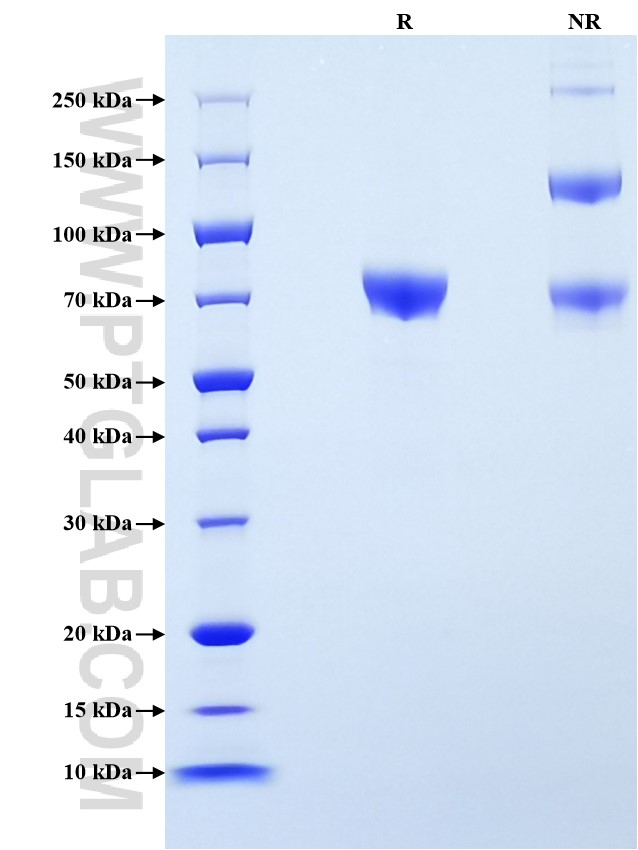Recombinant Human Endoglin/CD105 protein (His Tag)
种属
Human
纯度
>90 %, SDS-PAGE
标签
His Tag
生物活性
未测试
验证数据展示
产品信息
| 纯度 | >90 %, SDS-PAGE |
| 内毒素 | <0.1 EU/μg protein, LAL method |
| 生物活性 | Not tested |
| 来源 | HEK293-derived Human Endoglin protein Glu26-Gly586 (Accession# P17813-1) with a His tag at the C-terminus. |
| 基因ID | 2022 |
| 蛋白编号 | P17813-1 |
| 预测分子量 | 61.5 kDa |
| SDS-PAGE | 65-85 kDa, reducing (R) conditions |
| 组分 | Lyophilized from 0.22 μm filtered solution in PBS, pH 7.4. Normally 5% trehalose and 5% mannitol are added as protectants before lyophilization. |
| 复溶 | Briefly centrifuge the tube before opening. Reconstitute at 0.1-0.5 mg/mL in sterile water. |
| 储存条件 |
It is recommended that the protein be aliquoted for optimal storage. Avoid repeated freeze-thaw cycles.
|
| 运输条件 | The product is shipped at ambient temperature. Upon receipt, store it immediately at the recommended temperature. |
背景信息
Endoglin (ENG, CD105) is a homodimeric cell membrane glycoprotein of 180 kDa, composed of disulphide-linked subunits of 90-95 kDa. Endoglin is a proliferation-associated and hypoxia-inducible protein mainly expressed on vascular endothelial cells. It acts as an accessory receptor for transforming growth factor beta (TFG-β) and is involved in vascular development and remodelling. The important role of Endoglin in angiogenesis and in tumor progression makes it an ideal target for antiangiogenic therapy and a good marker for tumor prognosis. The extracellular domain of membrane-bound Endoglin can be proteolytically cleaved, releasing a soluble form of Endoglin (sCD105). Increased levels of sCD105 are linked to the pathogenesis of severe vascular disease, and also correlate with poor prognosis in patients suffering from various types of cancer.
参考文献:
1. Cheifetz S et al. (1992) Journal of Biological Chemistry. 267(27): 19027-19030. 2. Fonsatti E. et al. (2003) Oncogene. 22(42): 6557-6563. 3. Nassiri F. et al. (2011) Anticancer research. 31(6): 2283-2290. 4. Duff S E. et al. (2003) The FASEB Journal. 17(9): 984-992. 5. Pappa C A. et al. (2013) Hematological oncology.31(4): 201-205.
